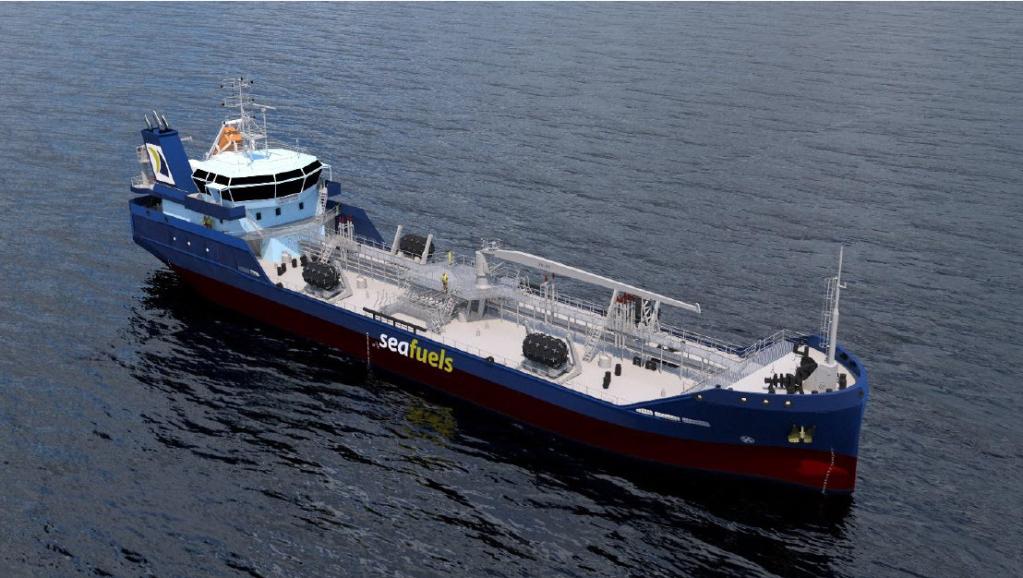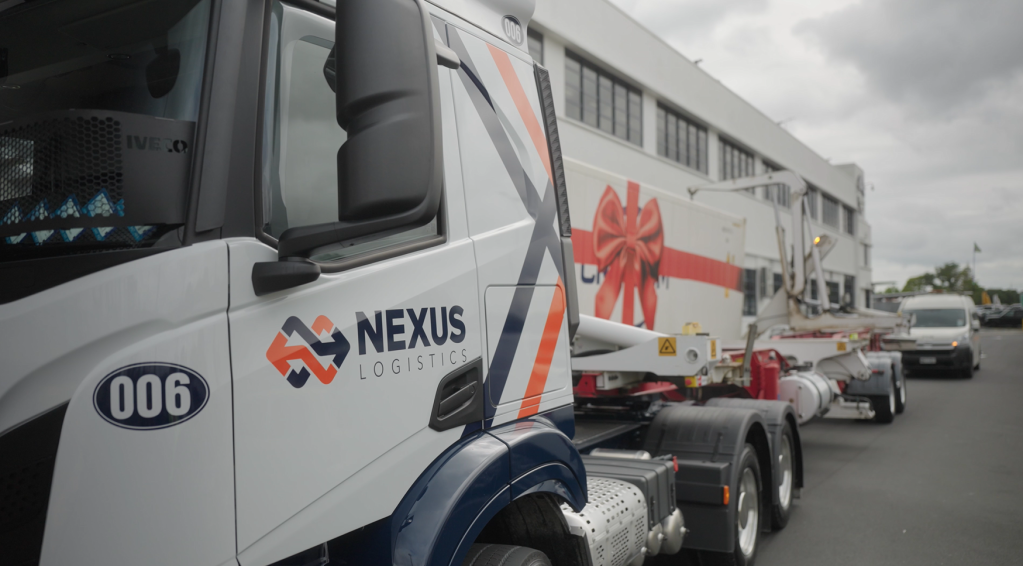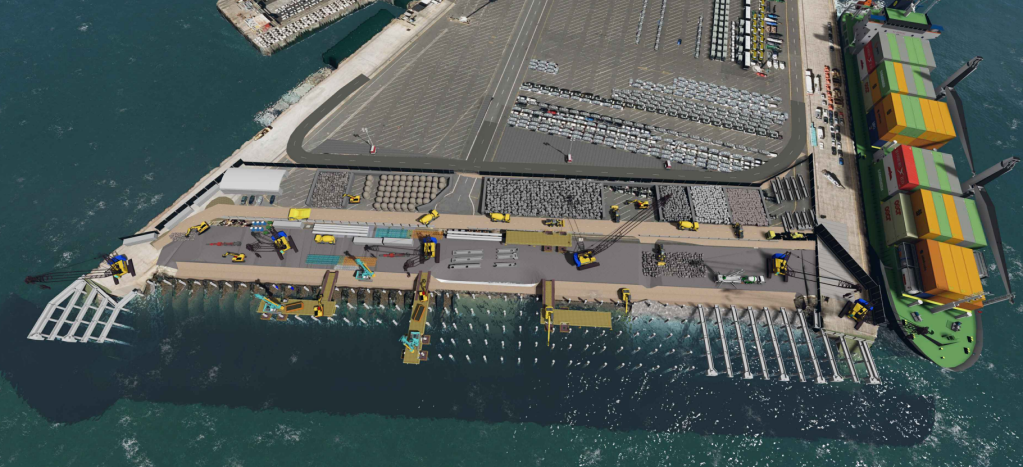Significant progress to deliver more capacity for Auckland Financial performance
For the six months ended 31 December 2019 |
| | GROUP | |
| | 31 December 2019 Unaudited $'000 | 31 December 2018 Unaudited $'000 |
| Revenue | 123,232 | 123,647 |
| Profit before income tax | 20,724 | 28,312 |
| Net Profit after tax | 17,179 | 24,401 |
| Dividend | | 18,626 |
| Capital Expenditure | 62,128 | 89,832 |
Trading Performance
- Container volume (TEU) of 475,173, down 2% (485,087 pcp).
- Total general cargo volume of 3.297m tonnes, down slightly (3.326m tonnes pcp).
- Car volume of 124,295 units, compared to 124,190 units in the pcp.
Ports of Auckland Chief Executive, Tony Gibson has today announced the company’s half-year results.
“Our company is in the midst of delivering our 30-year master plan, a major investment programme which will increase capacity, efficiency and returns, as well as lay the foundation for us to meet our 2040 zero emission goal.
Delivering such a large investment programme whilst keeping the port working well has not been without challenges, however the last six months have seen significant progress and the next six months will see the completion of two major master plan elements: container terminal automation and the new car handling building. We have also made significant progress on a third element, channel deepening.
We largely completed infrastructure work for terminal automation this period, enabling some capacity to be returned to terminal operations. There is still some work to do in the second half of the financial year, but the worst of the disruption from this work is behind us. The 2019 import peak did not see the same level of congestion or delay that was seen in 2018.
Even so, we have felt the effect of the automation work this period. Container volumes were down two percent on the year prior as a result of the loss of two service calls, a service change and a high number of vessels arriving out of schedule.
The ability to find staff in a tight labour market has also affected volumes. At times we haven’t had the resources to handle as many containers as customers have wanted. This situation is expected to ease once automation is fully delivered.
Automation will go live in two phases: the northern part of our terminal late March and the southern area two-three months later. In early January we decided to put the go-live date for Phase 1 back a month to the end of March 2020 so that we could handle unexpectedly high January volumes.
Automation testing and preparation is going well. We are now testing the new terminal operating software using live terminal data. Staff training is ongoing and truck drivers are also being trained in the new processes.
Once automation is fully live around the middle of the year, we will gain a significant amount of terminal capacity, from around 900,000 TEU a year to around 1.7 million TEU. That is enough capacity to handle the freight needs of a million more people in Auckland and should last us until the middle of the century. If necessary, beyond this date further changes to the port layout and greater levels of automation could deliver enough capacity for an Auckland population of around 5 million people.
Work on our new car handling building has progressed very well and the building is expected to be finished on time and on budget around the middle of 2020.
It will deliver new capacity in time for the Auckland fishing fleet to be relocated to Marsden wharf for the America’s Cup and to handle an expected upturn in vehicle imports as New Zealand switches to an electric vehicle fleet.
We have started engagement for a new public space on the building’s roof which will be an exciting addition to the downtown waterfront. We aim to have the park open no later than 2023.
We have applied for consent to deepen our channel and asked for the application to be publicly notified. Notification was not required under the Auckland Unitary Plan for dredging inside the channel precinct, but we feel it is important for all our major projects to be carried out in an open and transparent manner. We also undertook a great deal of public engagement prior to lodging consent. Council has now received public submissions and we expect a consent hearing to be held later this year.
Work at our Waikato Freight Hub has progressed well, with the completion this period of the new access road and bridge which will be vested with Waikato District Council. Construction of the first stage of heavy-duty pavement for the inland port part of the development is underway.
Financial performance
As expected, revenue was flat while costs for the last six months were up, due to the investment programme, higher interest costs, and higher labour costs. As a result, net profit after tax was $17.2 million, compared to $24.4 million in the pcp.
This situation will remain much the same for the full year. The company will not pay an interim dividend and will pay a lower full-year dividend as forecast. The second half of the year will be impacted by the new coronavirus. While we expect the impact to be temporary, we can’t estimate the quantity of it yet.
Looking forward to the 2020/21 financial year, while there is still uncertainty in the global trade environment, the completion of the automation project will mean more capacity at the terminal and the ability to handle greater volumes. With new capacity in hand and a third berth in operation, we will look to win back both volumes and services over the coming year.
Our people
One of the biggest issues for our people is the impact of automation on jobs. We expected around 50-60 roles to be affected, but as we get closer to go-live we can see several factors which may lead to a lesser impact.
First, our container terminal operations are under-staffed due to a tight labour market. Second, some jobs may change but not disappear and some new roles are being created. Third, when automation goes live we will also open our third container berth and we expect volume to increase.
This is a potentially positive situation. If we win back services and increase volume, we may have a situation where no roles are lost, so once automation is fully operational, we will be targeting volume that has moved to other ports in the last few years. Given our position on Auckland’s doorstep, with a faster, lower carbon supply chain than other ports, we expect to be successful in winning back business.
Because we will not know the exact impact on jobs until after automation is fully operational, we have given a commitment that there will be no staff changes until after implementation is complete. We are ensuring staff are kept well informed.
Zero-emission by 2040
We intend to be a zero-emission port by 2040.
As a member of the Climate Leaders Coalition we have made a public commitment to set an emissions reduction target. We have also committed to the Science Based Targets initiative (SBTi) because of the scheme’s ability to help with verifying that our emission reduction roadmap is consistent with an approach grounded in science. The SBTi requires emissions reductions roadmaps to be aligned to a target consistent with keeping global warming well below 2OC or 1.5OC of pre-industrial levels.
We have developed an emissions reduction roadmap in line with the ‘well below 2OC’ target and it was approved by the Board in December. In the short to medium term the roadmap involves using fuel switching (to bio diesel or renewable diesel) and the purchase of renewable energy certificates for our electricity to achieve emissions reductions. This will be followed by the adoption of zero emission technology in the mid to late 2030s. We are now submitting our roadmap to the SBTi for verification.
We are also looking to reduce emissions in the supply chain. Our great advantage as a port is that we are in the market we serve. Other ports, like Tauranga or Northport, lie a great distance away so goods imported to Auckland through these ports have a higher carbon footprint.
We have created a carbon calculator so that cargo owners can see the difference using a local port makes. For example, a 15 tonne, 20-foot container imported via Ports of Auckland and delivered to South Auckland will only emit 18 kilogrammes (kgs) of carbon. Through Tauranga it will emit 130 kgs – seven times as much – and through Northport ten times as much: 184 kgs.
At a time when climate change seems to be accelerating, every gram of carbon counts. Currently around 300,000 TEU of Auckland freight is handled through Tauranga. Auckland could potentially save over 30,000 tonnes of CO2 a year by importing through its local port. By helping customers see the benefit, we can make a significant contribution to Auckland’s effort to fight climate change.
We continue to make a positive economic and social contribution to Auckland and New Zealand. Our recent investments will ensure we can continue to play that role in the future, and we will see the results of that investment delivered from 2020 onwards.
I would like to thank our staff, management and directors for the work they have been doing to prepare our port for a new era and to keep it operating at a high standard.”
MEDIA RESOURCES
The 2019/20 Interim Report can be downloaded here.
ENDS
For further information contact:
Matt Ball
Head of Communications
Ports of Auckland
M: +6421 495 645
E: [email protected]


